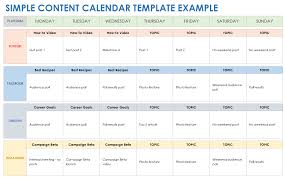Mastering the Content Calendar for SEO Success
1. Define Goals & Identify Your Audience
Start by clarifying what you want your content calendar to achieve—boost organic traffic, support the sales funnel, or improve engagement. Then, develop audience personas and map their search intent: are they seeking information, navigating brands, or making purchases? Aligning your calendar with these goals ensures every piece of content serves a purpose.
2. Conduct Thorough Keyword Research
Keyword research is the foundation. Use tools like Google Keyword Planner, Ahrefs, SEMrush, and AnswerThePublic to find high-volume, low-competition keywords and long-tail phrases that fit your content pillars For each content idea, pick 2–3 keywords—one primary and one or two secondary—to ensure focus without stuffing.
3. Cluster Topics & Structure Formats
Group keywords into strategic “pillar” to Decide on formats—blog posts, videos, infographics—to match intent and channel: infographics for visual learners, videos for tutorials, blog posts to detail analysispics (e.g. “SEO strategy”) and related sub-topics (“keyword research tools”, “on-page SEO tips”) to form content clusters
4. Choose the Right Tools & Templates
Basic tools like Google Sheets offer collaborative, free calendar options with shareable templates
For advanced scheduling, project tools like Trello or Asana help manage workflows; platforms like CoSchedule integrate scheduling with publishing .
5. Build & Populate the Calendar
Create columns such as Title, Primary/Secondary Keywords, Content Type, Author, Publish Date, Status, Intent Then populate it, ensuring a consistent cadence—whether weekly blog posts, biweekly videos, or monthly infographics—while accounting for seasonality and trending topics
6. Optimize Each Piece for SEO
For each scheduled post:
-
Use the primary keyword in the title, headers, first 100 words, URL, and meta description.
-
Sprinkle secondary keywords and semantically related terms naturally.
-
Incorporate internal and external links, relevant visuals, and proper metadata
. Publish, Track & Refine
Monitor performance using Google Analytics, Search Console, Ahrefs, and SEMrush to track traffic, rankings, CTR, and user behavior Revisit your calendar regularly—refresh outdated content, shift underperforming ideas, and add timely topics based on trends and competitor insights